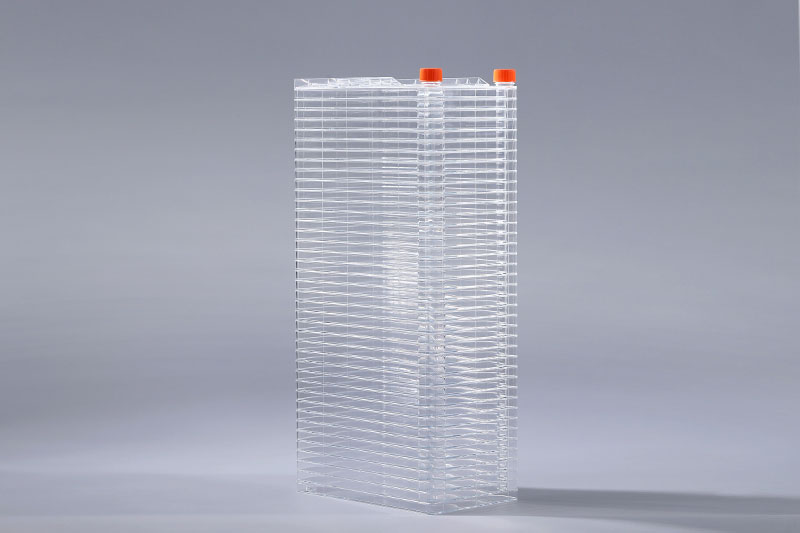With the development of science and technology, more and more cell factories are used in the large-scale cultivation of cells. Compared with traditional roller bottle culture, the cell factory has the advantages of large cultivation area, less space, less manual operation, and can be combined with automated equipment.
Due to the culture characteristics of cell factories, the easiest way to scale up is to increase the number of cell factories. When the number of cell factories increases, we will encounter the same trouble as when using cell flasks for culturing-multiple opening operations. As the number of lid openings increases, the operation time will be prolonged, and the risk of contamination will also increase. In order to solve this problem, a very simple way can be used to form a group of cell factories from individual units, and to combine open culture components into a closed system. The operation method is as follows:
1. Prepare customized transfer caps, culture media, cell factories, and connecting pipes.
2. Connect the transfer cap with the culture medium bottle, the cell factory and the connecting pipeline in a class A environment.
3. Connect the liquid transfer cover and the connecting pipeline through a quick interface to form a closed system.
4. Carry out the transfer operation. After the transfer is completed, the connecting pipeline can be kept on the cell factory for culture, and used for the next step of changing the medium and passaging operations.
The combined cell factory will form a closed system. The culture medium will no longer pass through the open environment, which greatly reduces the risk of external contamination. The culture medium bottle can also be connected to the piping system after assembly in the ultra-clean station through a custom-made liquid transfer cap to achieve a closed liquid transfer.
The FAI climbed 5.9 percent year-on-year in the first 11 months of 2018, quickening from the 5.7-percent growth in Jan-Oct, the National Bureau of Statistics (NBS) said Friday in an online statement.
The key indicator of investment, dubbed a major growth driver, hit the bottom in August and has since started to rebound steadily.
In the face of emerging economic challenges home and abroad, China has stepped up efforts to stabilize investment, in particular rolling out measures to motivate private investors and channel funds into infrastructure.
Friday's data showed private investment, accounting for more than 60 percent of the total FAI, expanded by a brisk 8.7 percent.
NBS spokesperson Mao Shengyong said funds into weak economic links registered rapid increases as investment in environmental protection and agriculture jumped 42 percent and 12.5 percent respectively, much faster than the average.
In breakdown, investment in high-tech and equipment manufacturing remained vigorous with 16.1-percent and 11.6-percent increases respectively in the first 11 months. Infrastructure investment gained 3.7 percent, staying flat. Investment in property development rose 9.7 percent, also unchanged.
 English
English



















































